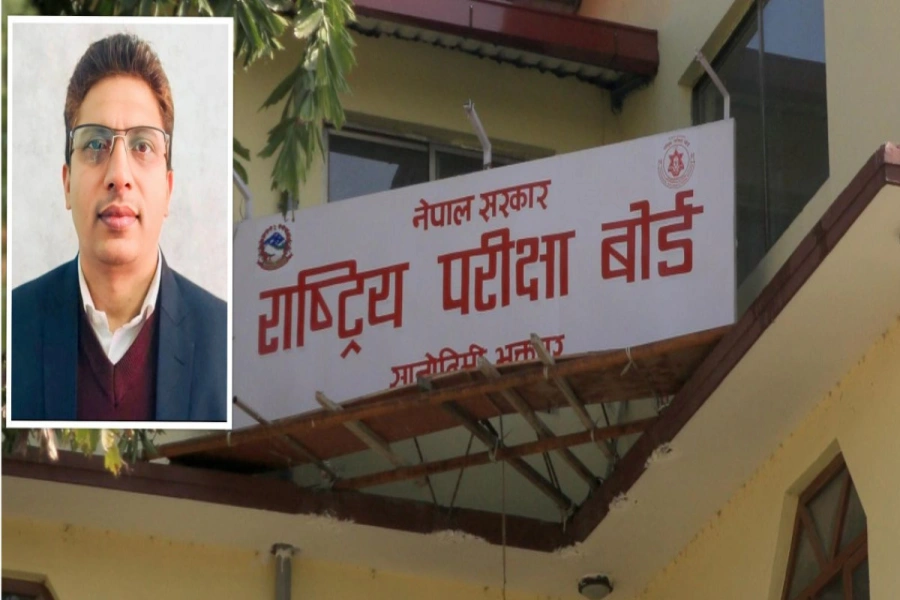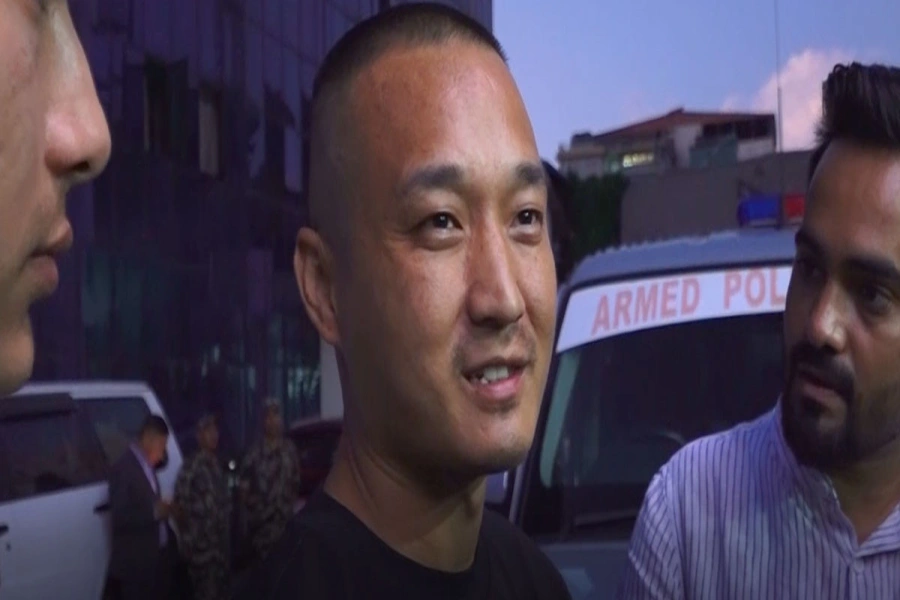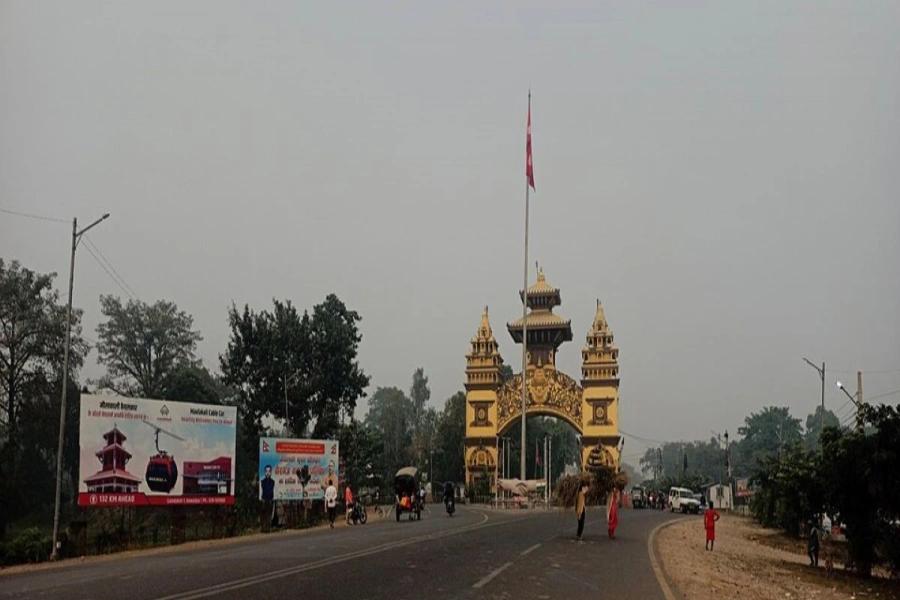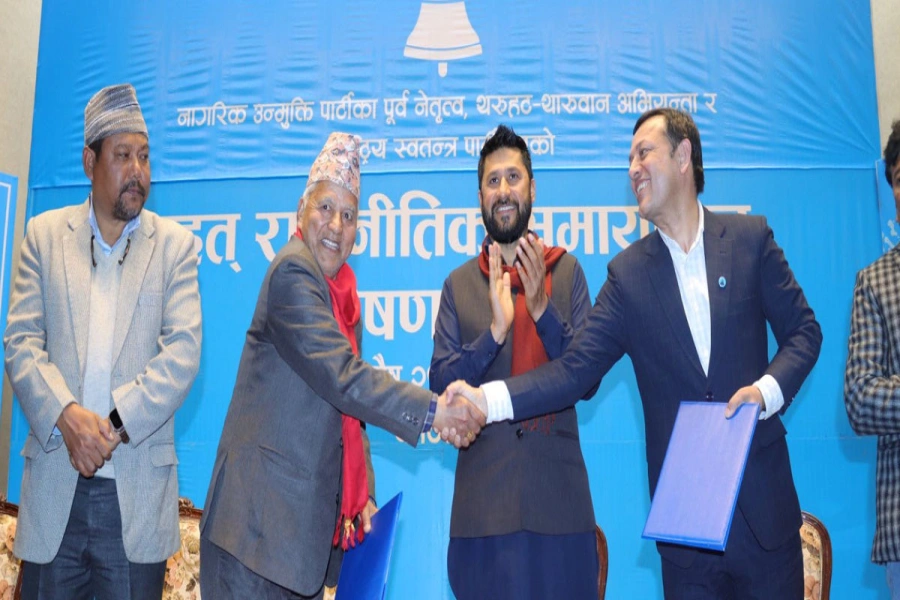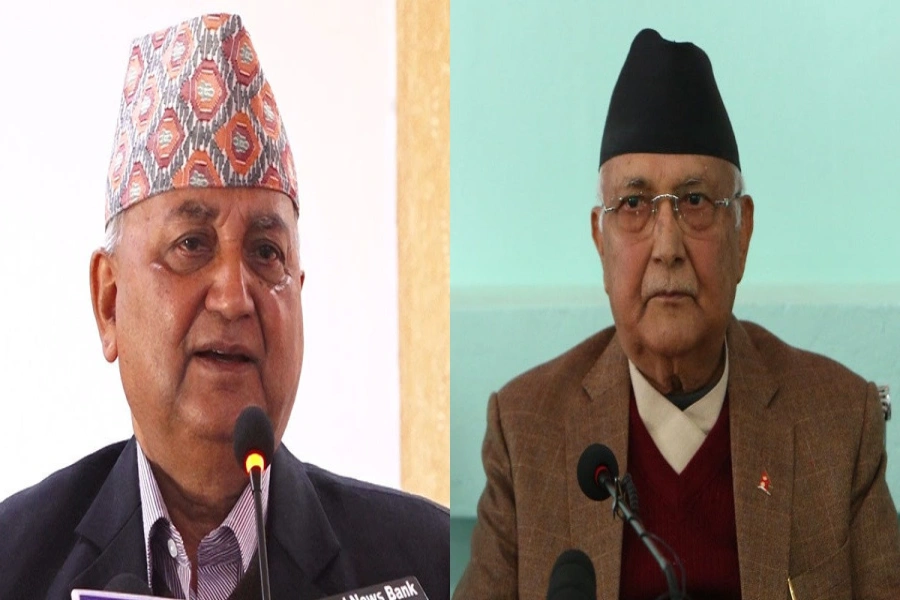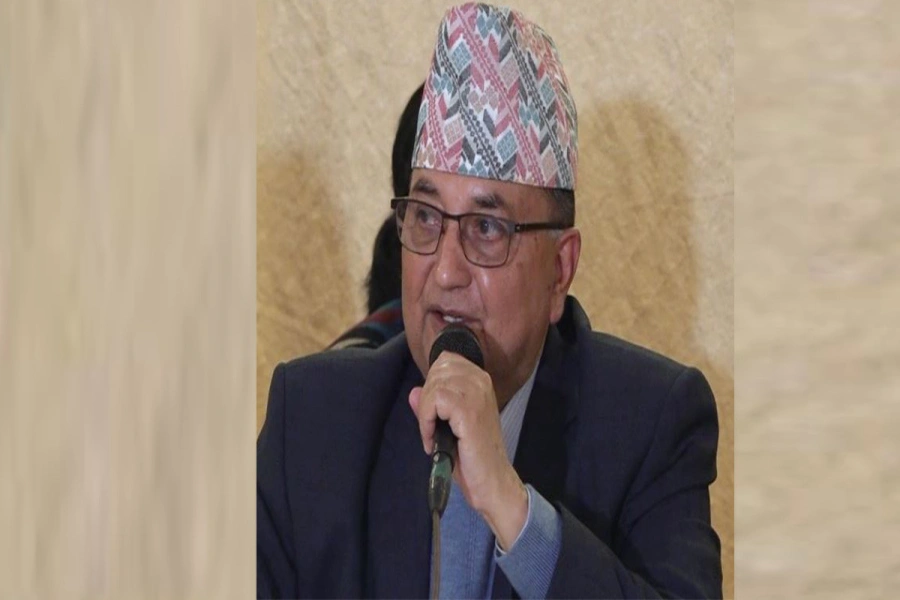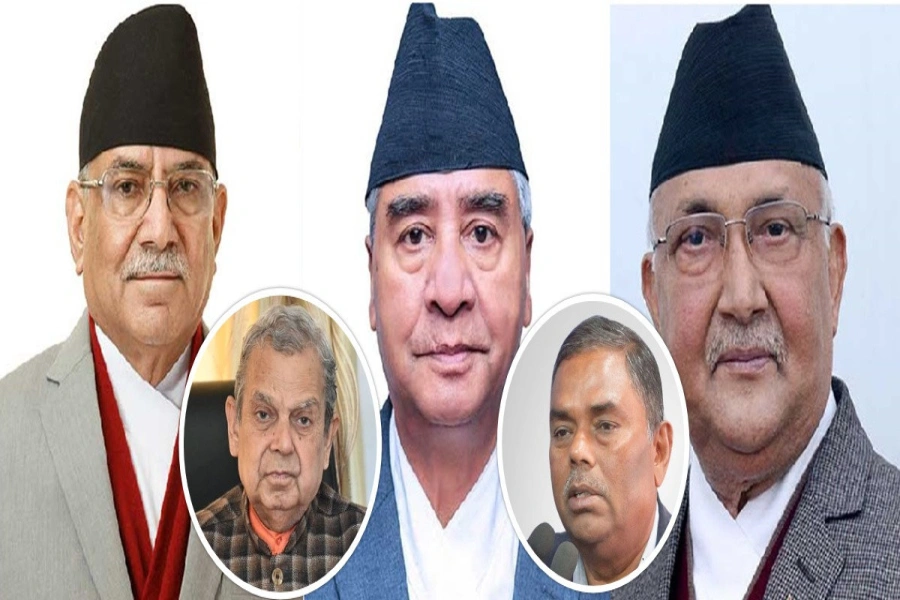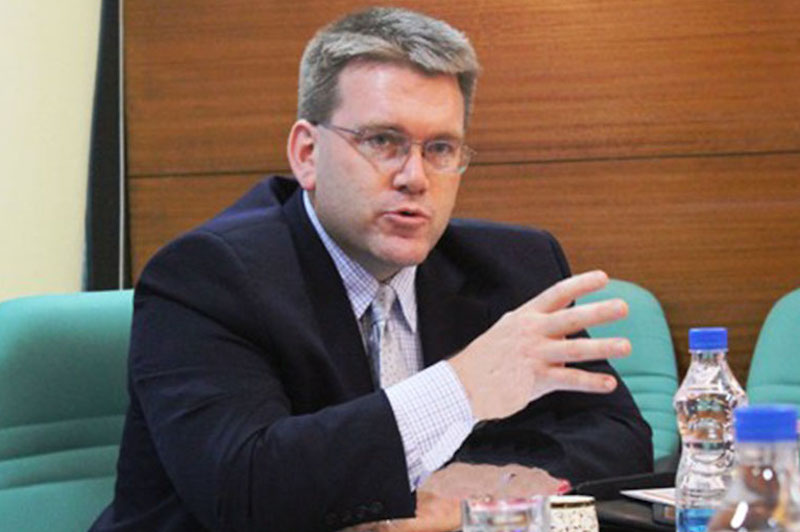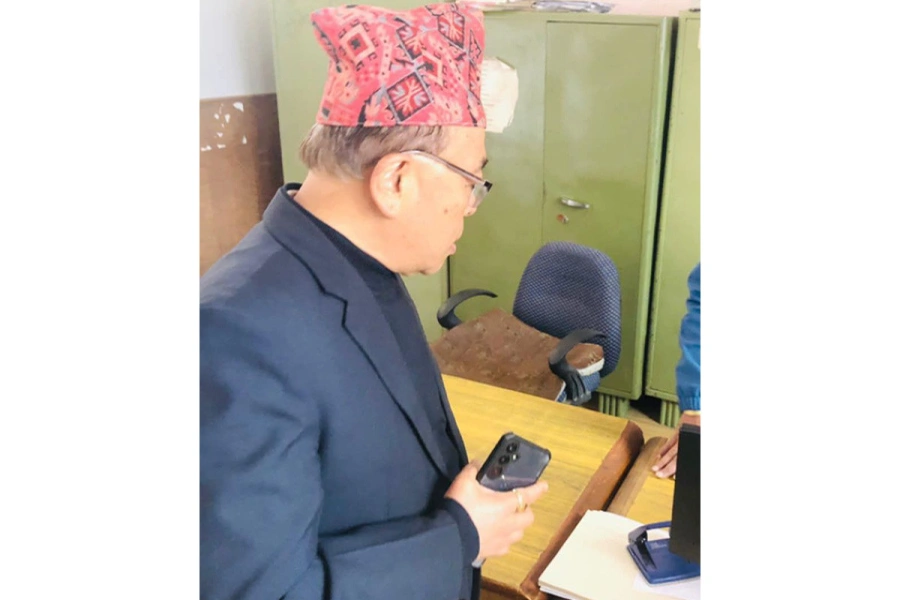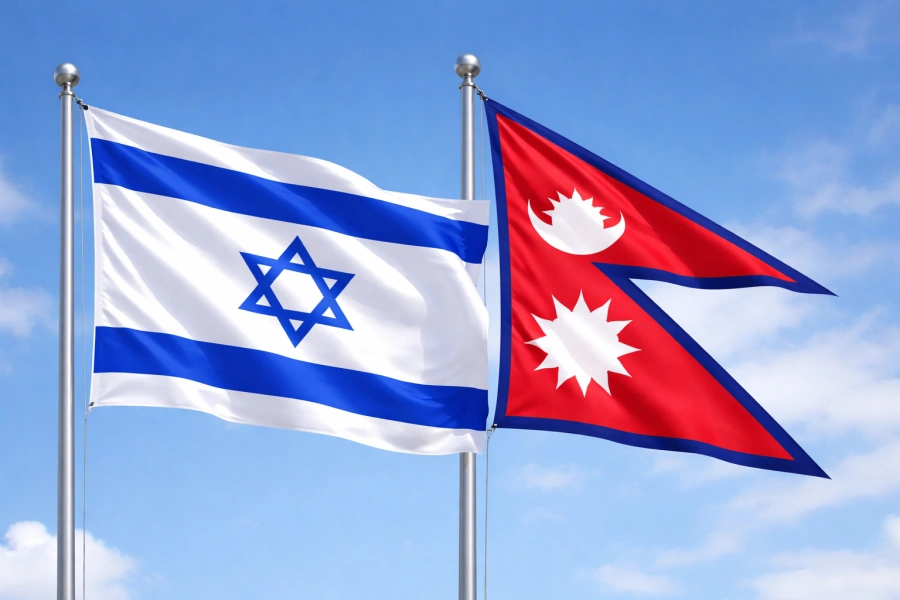The biophysical threats of climate change are compounded by the socio-economic and political vulnerability of informal settlements. Increasing population density, high incidence of poverty, low literacy rate, poor institutional capacity, and limited or no access to financial services compound the threat of climate change.
Once again, the conflict between the people living in informal settlements and the Kathmandu Metropolitan City (KMC) office received national attention. The mayor of KMC expressed his dissatisfaction over the statement made by former Prime Minister KP Oli through Facebook. The mayor criticized the former PM for his inaction when he was in power and authority to solve the problems of informal settlements but rather used the problems of informal settlements for his political advantage. However, no matter who is in power, history shows their reluctance to solve this problem is “largely underpinned by the neoliberal urban development paradigm, which views slums as ‘environmental hazards’ that must be demolished in order to ‘beautify’ the city”.
Solving the problems of informal settlements is very challenging but critically important from the perspective of climate change and public health. Informal settlements are not only highly vulnerable to the changing climate but could also create a conducive environment for infectious diseases like COVID-19 and dengue, and malaria to flourish and spread. This problem of informality is so huge that the SDGs of the UN have a dedicated goal on “Sustainable Cities and Communities” and one of the targets of this goal is to ensure access for all to adequate, safe and affordable housing and basic services and upgrade slums by 2030.
Rising informal settlements
Today, nearly 55 percent of the world’s population resides in urban areas and this number is projected to increase to 60 percent by 2030 and 68 percent by 2050. Asia and Africa alone will account for 90 percent of that increment. Similarly, around 900 million people live in informal settlements today. With the increase in urban population, the population living in informal settlements is also expected to rise to 3 billion by the end of 2050. That tells 1 in 3 people will live in informal settlements by the mid of this century.
SHIFT for Our Planet: Youths urge authorities to make climate j...

Talking about Nepal, its urban population was only about 20 percent of the total population in 2018 but it will be one of the top 10 fastest urbanizing countries during 2018-2050. Data from the Ministry of Urban Development shows that about 10 percent of urban population of Nepal comprises people living in informal settlements (often referred to as “squatters” or “Sukumbasi”). And the population living in informal settlements in Nepal will rise with sprawling urban areas as people move to urban areas in search of better opportunities and the future of their offsprings. Despite this, very little attention is being paid, both in academic and policy world, to the impacts of climate change in informal settlements. Therefore, this article will focus only on the vulnerability of informal settlements to climate change but not on politics of informal settlements.
Vulnerability of informal settlements to changing climate
The occupants of informal settlements have no legal right to their houses and are considered illegal occupants of land. This illegality makes the government as well as other national and international organizations "unable or unwilling" to work with the communities living in informal settlements. Additionally, housing in the informal settlements is not in compliance with building codes and the infrastructure in the informal settlements is of poor quality, which provides little protection from climate change and its associated threats. Because of the lack of good infrastructure, informal settlements are vulnerable to floods, landslides, heat waves, and heavy storms. Moreover, these climate change-related events will disproportionately impact informal settlements because of their lack of necessary provisions for adaptation.
The biophysical threats of climate change are compounded by the socio-economic and political vulnerability of informal settlements. Increasing population density, high incidence of poverty, low literacy rate, poor institutional capacity, and limited or no access to financial services compound the threat of climate change. The majority of people in informal settlements live in extreme poverty (earning less than $ 1.90 a day). Their income is uncertain, as most people living in informal settlements rely on the informal economy (daily wage labor) for their livelihoods. These poor people also disproportionately suffer from diarrheal diseases when water is contaminated during flooding and bear the significant impact of heat stress due to rising temperatures as many of them work outdoors irrespective of the temperatures outside.
Additionally, tropical vector-borne diseases like dengue and malaria will be more common in informal settlements because of the rising temperature and unsanitary conditions they live in. This will create a new favorable environment for breeding of mosquitoes. At least 38 people died and 28,109 were infected by the dengue virus in Nepal in 2022. Kathmandu alone accounted for 33.8 percent and 35 percent of the total infection and death respectively. However, we do not know how many of those infected people live in informal settlements. Because of unsanitary living conditions and living closer to water bodies, it is expected that dengue has disproportionately affected people living in the informal settlements.
Adaptation techniques adopted in informal settlements
In the absence of necessary information (changing pattern of rainfall and temperature) and technical resources like early warning systems, communities in informal settlements are adapting to climate change based on their subjective experiences and memories. People in informal settlements are adopting a coping strategy which is different from adaptation. Coping is a way of responding to an experienced impact with short-term vision (for instance, for one season) whereas adaptation is the process of adjusting to both experienced and expected impact in the long-term. For instance, people living in informal settlements near the banks of the Bagmati River in the Kathmandu Valley are using sandbags to reduce flood water damage and erosion problems. This coping strategy might help them to prevent today’s climate risks but not prepare them for future risks like increasing flash flooding.
Another important factor that promotes the short-term coping strategy is the lack of land tenure security. This discourages the residents of informal settlements from investing in their homes that can withstand floods and erosion as they fear that the government can demolish their houses at any time.
Reducing vulnerability of informal settlements
To meet the adaptation needs of communities that rely mainly on the agricultural and forestry sector, Nepal has also prepared a National Adaptation Program of Action (NAPA) and National Adaptation Plan (NAP) with the financial support of the United Nations Framework Convention on Climate Change (UNFCCC). However, these policies, which intend to implement planned adaptation interventions, largely exclude informal settlements, and leave the people living in these communities to cope with environmental risks that threaten their livelihoods.
Since NAPA and NAP exclude informal settlements, the Government of Nepal should develop a climate policy that targets specifically the adaptation needs of informal settlements. Similarly, the distribution of land ownership certificates to the people living in informal settlements would encourage them to invest in building strong houses that can withstand flood and erosion.




